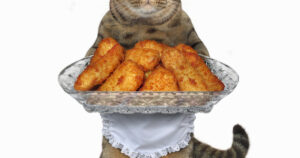With their alert, pointy ears and excellent hearing, cats are known for having impressive ears. But some breeds stand out with their adorably small or folded ears, giving them a uniquely cute look. Whether tightly folded forward or curled tightly back, these petite ears make particular cats irresistibly lovable.

We will highlight seven cat breeds blessed with precious little ears and what causes this trait.
We’ll also give tips on ensuring your cat’s ears stay healthy regardless of size or shape. Meet the kitties with tiny ears that will melt your heart!
What Causes Small Ears in Cat Breeds?
For breeds like the Scottish Fold and American Curl, their tiny ears result from genetic mutations affecting cartilage formation. The Scottish Fold’s ears fold forward and down due to defective cartilage, unable to hold the ears upright. The American Curl’s ears curl back tightly thanks to a dominant gene mutation causing structural changes.
For other breeds, like Persians and British Shorthairs, selective breeding developed their naturally petite ears to complement their rounded faces. Their genes code for slightly smaller ears compared to other breeds.
While adorable, some ear mutations have been linked to health problems later in life for specific breeds. But cats with small ears can live long, joyful lives when cared for properly.
7 Cat Breeds With Precious Little Ears
Scottish Fold
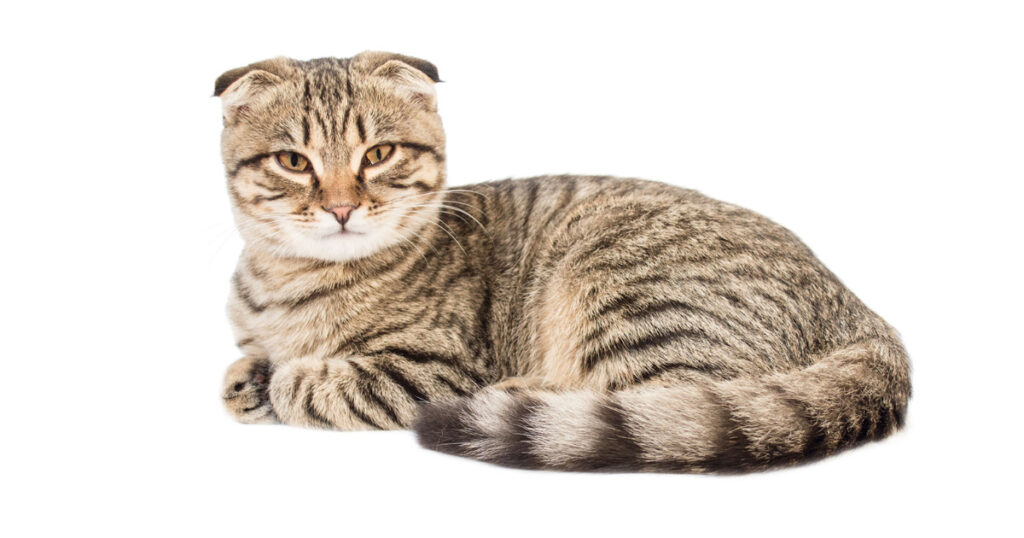
The Scottish Fold is instantly recognizable by its medium-sized body, rounded face, and forward-folding ears. Their ears fold forward and down, often in multiple folds, due to defective cartilage unable to support the ears upright. This gives them an endearing owl-like expression that draws affection from humans.
Scottish Folds typically have sweet, loyal personalities to match their cute appearance. They tend to bond closely with their owners and dislike being left alone for long periods. While not extremely lively, they enjoy playing with toys and learning tricks for treats. Their calm temperament and curiosity make them devoted companions.
American Curl

The American Curl stands out with their distinctive curled-back ears that gracefully curve. Kittens are born with straight ears, but the ears start to curl back within days. The degree of curl varies from cat to cat, ranging from a 90 to 180-degree arc.
Beyond their unique ears, American Curls have an endearing devotion to their human families. They’re known for energetically greeting owners at the door and snuggling in laps whenever possible. While playful and curious, they aren’t overly vocal or demanding. Their affectionate nature and silky coats make them much-loved pets.
Persian

The Persian is renowned for its luxuriously long fur and distinctly rounded face featuring large, expressive eyes set wide apart. Their compact ears are set low on the head, adding to their open, doll-like appearance. Persians come in a rainbow of colors and patterns like tabby, calico, and colorpoint.
As one of the most popular cat breeds, the Persian is known as a gentle, devoted, but discriminating lap cat. They tend to bond deeply with a single person. While not excessively active, Persians delight in lounging comfortably while receiving petting and admiration. Daily grooming keeps their splendid coat free of mats.
Highlander

The Highlander, a hybrid between the Desert Lynx and Jungle Curl breeds, has arrestingly wild features like spotted or striped fur and curled-back ears. Instead of standing upright, their tiny ears curve back tightly towards the head. Highlanders often have alluring bobbed tails and extra toes on their medium-large paws.
Beneath the exotic exterior, Highlanders have playfully friendly personalities. They remain affectionate and loyal into adulthood. Energetic and agile, Highlanders benefit from regular interactive play and exercise to satisfy their high activity levels. They make particularly lively and entertaining companions for active owners.
Exotic Shorthair
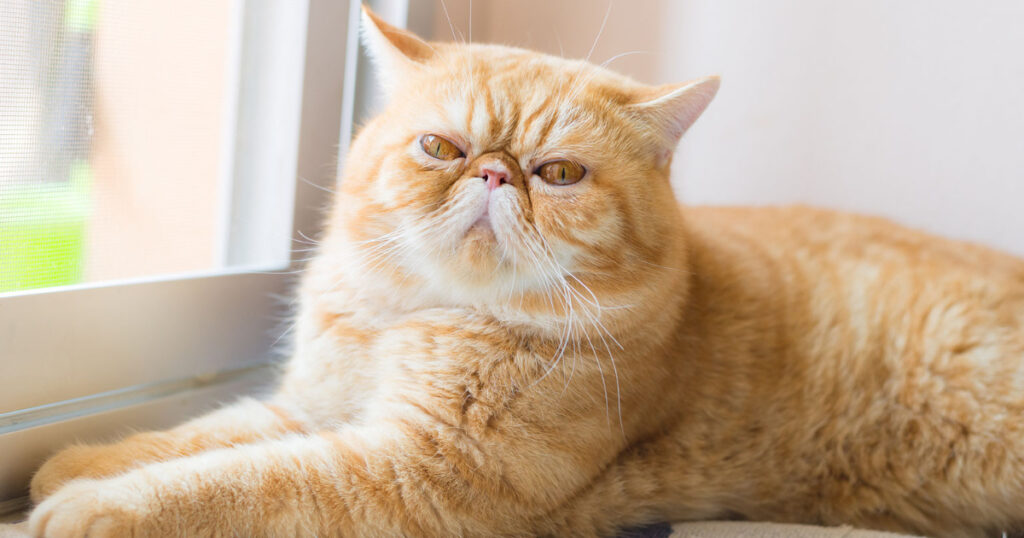
Developed from the Persian, the Exotic Shorthair retains the beloved Persian’s cherubic face and small ears but with a short plush coat perfect for those wanting a lower-maintenance Persian. Their signature rounded head, set-apart eyes, and tiny ears set on a medium-sized sturdy frame give them undeniable appeal.
True to their Persian ancestry, Exotic Shorthairs have easygoing, companionable temperaments. They readily accept other pets and politely tolerate being dressed up or handled. While playful and curious, they also appreciate lots of lap time for pampering. Daily brushing easily keeps their velvety coat looking sublime.
British Shorthair
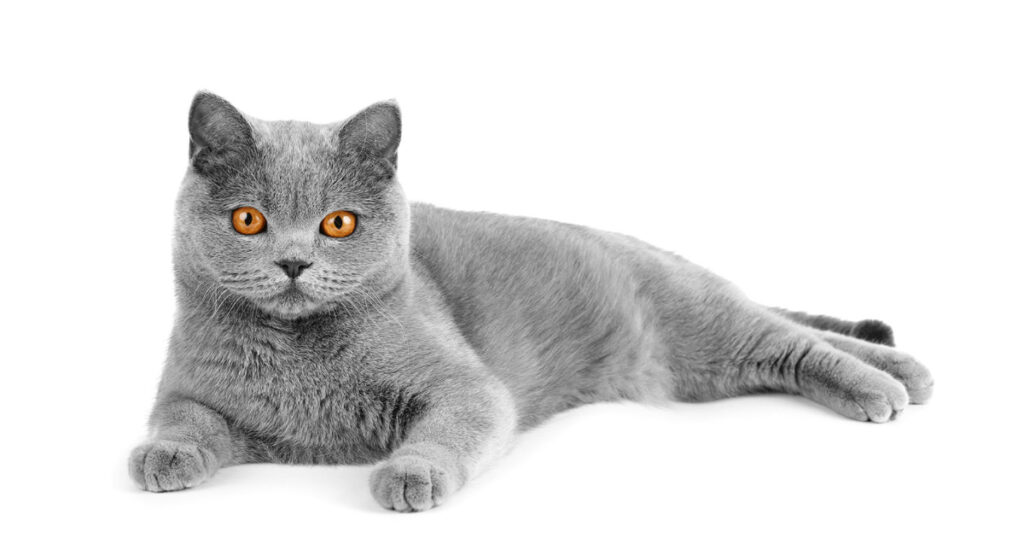
The British Shorthair has a famously powerful yet loving personality housed in a solidly muscular body with a broad face and small ears. Their dense coat adds to the illusion of petite ears. With its large eyes, plump cheeks, and rounded head, the overall effect is undeniably adorable.
While their British reserve makes them cautious with strangers, once-bonded British Shorthairs demonstrate remarkable devotion. They steadily follow their chosen person from room to room, keeping them company without being needy. Patient and gentle, they thrive in a tranquil household. Daily brushing and minimal bathing maintain their lush coat.
Munchkin
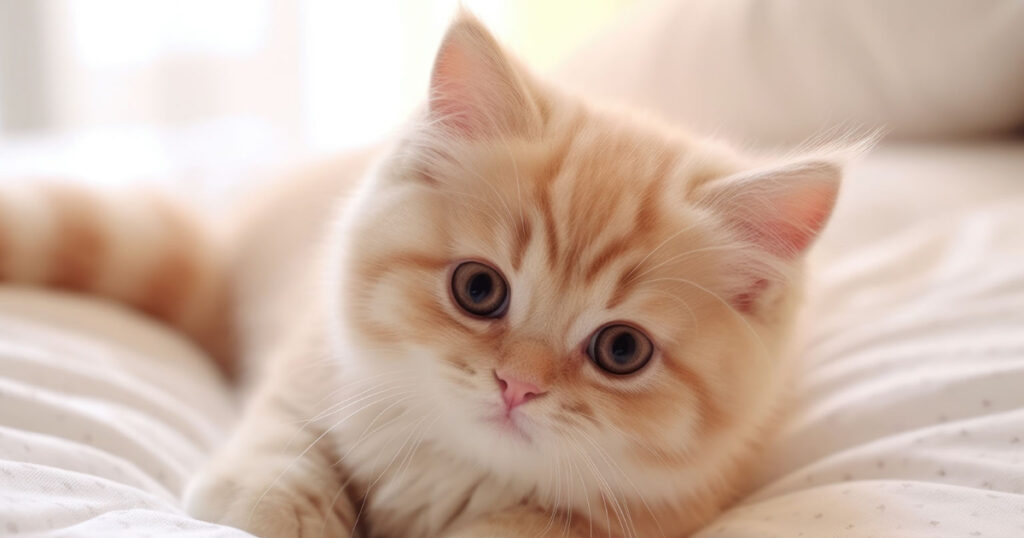
Munchkins captivate with their tiny size thanks to their signature short legs paired with a medium cat torso and head. This dwarfism makes their ears appear proportionally small and cute. Munchkins come in all coat colors and patterns like tabby, tortoiseshell, and colorpoint.
Despite their small stature, Munchkins have hefty appetites for food and playtime. They love climbing cat trees, playing fetch, and racing around the house. Affectionate and outgoing, Munchkins bond intensely with their families. Sturdy and muscular, these little cats have big personalities perfect for lively households.
Tips for Caring for Your Cat’s Ears
- Gently clean inside ears only when needed with a vet-approved solution. Never insert anything into the ear canal.
- Check ears weekly for redness, discharge, odor, swelling – signs of potential infection.
- Cats with curly ears may need frequent ear cleaning to remove wax buildup.
- Carefully trim the hair around ears and under ear flaps to improve airflow and reduce mites.
- Avoid handling the base of ears roughly, as this can damage the cartilage in folded/curled ears.
- See your vet promptly if you notice head shaking, scratching, or ear discomfort.
- Get your ears checked at annual vet exams to catch any problems early.
Frequently Asked Questions
Are small ears bad for cats?
Not necessarily. Extremely folded ears or dwarf characteristics can potentially cause health issues. But moderately small ears alone don’t negatively impact health. Proper care and vet monitoring can prevent problems.
Do cats with small ears hear worse?
No, having slightly smaller ears doesn’t affect hearing ability. Even Scottish Folds with tightly folded ears can hear perfectly fine. Ear size doesn’t influence hearing as long as the inner ear works appropriately.
Why do some cats have such tiny ears?
For some breeds, it’s due to genetic mutations like the folded ear gene in Scottish Folds. For others, like Persians, selective breeding intentionally developed their naturally petite ears to complement their facial features.
Are small ears more prone to infections?
Not always. Unless the ear canal is narrowed or obstructed, moderately small ears are no more infection-prone. But cats with tightly curled ears may need more frequent cleaning as wax can accumulate more easily.
What are the most popular small-eared breeds?
Some favorites are the Scottish Fold, American Curl, Persian, Exotic Shorthair, British Shorthair, and Munchkin Cat. But any breed can have slightly petite ears as part of natural variation.
Conclusion
While all cats are cute, those blessed with tiny folded or curled ears have an undeniable charm. For some breeds, small ears resulted from genetic mutations like the Scottish Fold. For others, like Persians, selective breeding intentionally developed their petite ears. No matter the origin, these diminutive ears give certain breeds huge appeal. With proper care, regular vet checks, and awareness of any health risks, your small-eared kitty will bring you years of joyful companionship!



